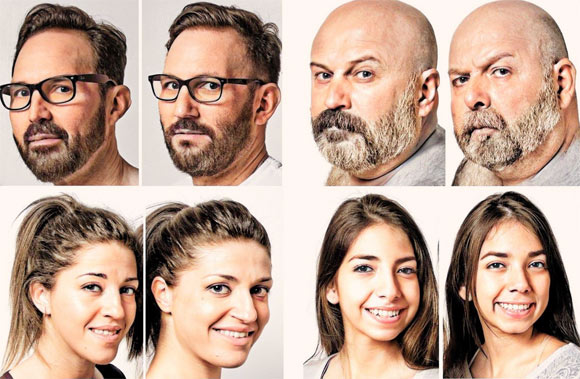New research led by Josep Carreras Leukaemia Research Institute scientists shows that people with extreme look-alike faces share common genotypes, but differ in their DNA methylation and microbiome landscapes.
Look-alike humans share similar genotypes and differ in their DNA methylation and microbiome landscape. Image credit: Joshi et al., doi: 10.1016/j.celrep.2022.111257.
“For decades, the existence of individuals who resemble each other without having any family ties has been described as a proven fact, but only in anecdotal terms and without any scientific justification,” said senior author Dr. Manel Esteller, a researcher at the Josep Carreras Leukaemia Research Institute.
“The widespread use of the Internet and social networks for image-sharing has meant that we are now able to identify and study such people.”
In their study, Dr. Esteller and his colleagues set out to characterize a set of look-alike humans on a molecular level.
To do so, they recruited human doubles from the photographic work of François Brunelle, a Canadian artist who has been obtaining worldwide pictures of look-alikes since 1999. They obtained headshot pictures of 32 look-alike pairs.
They determined an objective measure of likeness for the pairs using three different facial recognition algorithms.
In addition, the participants completed a comprehensive biometric and lifestyle questionnaire and provided saliva DNA for multiomics analysis.
“This unique set of samples has allowed us to study how genomics, epigenomics, and microbiomics can contribute to human resemblance,” Dr. Esteller said.
Overall, the results revealed that these individuals share similar genotypes, but differ in their DNA methylation and microbiome landscapes.
Half of the look-alike pairs were clustered together by all three algorithms.
Genetic analysis revealed that 9 of these 16 pairs clustered together, based on 19,277 common single-nucleotide polymorphisms.
Moreover, physical traits such as weight and height, as well as behavioral traits such as smoking and education, were correlated in look-alike pairs

